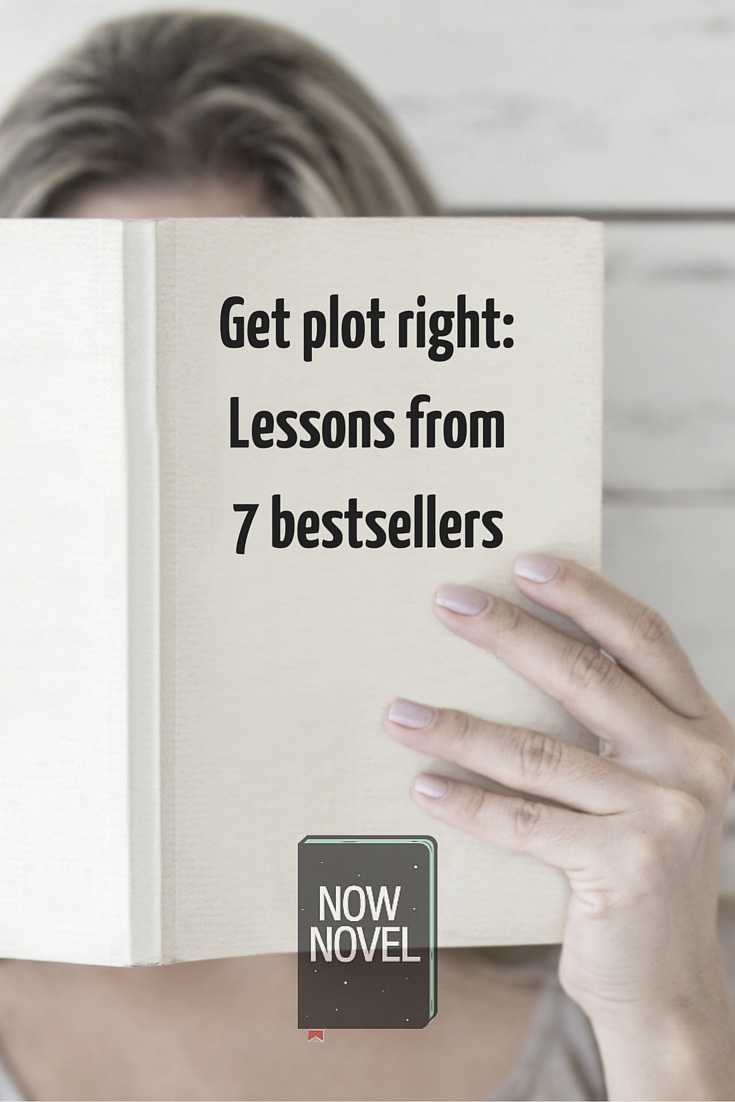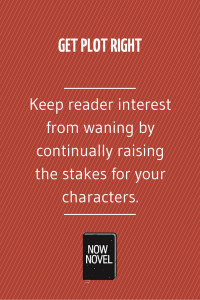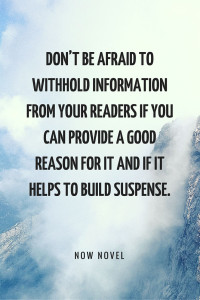If you want to build a large readership it’s crucial to get plot right. If you look over bestseller lists, you might think that the secret to writing a best-selling novel is to have written one before. Yet here are some books from the past dozen years or so that broke out for their writers and some lessons we can take away from their plotting:
The Da Vinci Code by Dan Brown
Dan Brown wrote three thrillers that made little impact before his fourth, The Da Vinci Code, became one of the most successful books of all time after its publication in 2003. What was Brown suddenly doing right?
Love it or hate it (some reviewers found the book ‘ludicrous’), Brown’s greatest accomplishment plot-wise was that he tapped into public fascination with conspiracies, scandals and secrets. The Da Vinci Code seemed almost plausible enough to be true — indeed, for a time after its publication, some argued that it was true, and it posited a conspiracy that would shake the foundations of Western civilisation were it true. According to Brown’s book, Jesus Christ and Mary Magdalene married and bore children together, a bloodline that included the Merovingian kings of France and continued to the present day. Brown then told his story as a fast-paced mystery thriller over a short period of time, and his many readers kept turning pages to find out what incredible revelation would be next.
Controversial ideas married to a pulse-pounding pace in a story set over a brief time period are all components that made this a bestseller. The fact the story was historical and a thriller meant that it appealed to genre fiction readers of multiple genre preferences.
Gone Girl by Gillian Flynn
Gillian Flynn had written two well-regarded novels before she hit it big with her third, Gone Girl, in 2012. This story of a woman’s disappearance is narrated by both the husband and wife, and as the book goes on, the reader begins to realize that neither narrator is entirely reliable.
Much of what made Flynn’s book so compelling had to do with the way she chose to tell her story. By withholding crucial information from the reader yet doing so in a way that kept the reader from feeling cheated, she raised suspense. Flynn also is a master at complicating the narrative and the lives of her character. Both of the principal characters in her novel continually make choices that complicate their situations.
The lesson from Gone Girl is to choose an unusual structure for telling your story. Don’t be afraid to withhold information from your readers if you can provide a good reason for it and if it helps to build suspense. Keep reader interest from waning by continually raising the stakes for your characters.
The Girl With the Dragon Tattoo by Stieg Larsson
A Swedish journalist, Larsson died of a heart attack at the age of 50 in 2004. Following his death, three unpublished but complete manuscripts were discovered including The Girl With the Dragon Tattoo. It became an international best seller, and its sequels did as well. Some complained that the hasty English translation of this novel left something to be desired, but that didn’t seem to hinder its wild success. Here are some elements of the plot that may have contributed to the book’s popularity:
- The book is full of twists, red herrings and surprising reversals.
- The plot contains a number of gripping elements, and much of it is driven by the mysterious and compelling hacker Lizbeth Salander, who adds an edginess to the novel.
- With its focus on technology driving its plot, the novel feels very contemporary without ever veering into science-fiction that would make it a appeal to a more niche audience.
- The novel also feels as though it has a lot to say about feminism and misogyny in general and modern Swedish society. Readers feel as though they are getting something of greater substance than just another thriller.
Where The Girl With the Dragon Tattoo succeeds by being very contemporary, another bestseller looked to the past and found success:
The Thirteenth Tale by by Diane Setterfield
Diane Setterfield’s first novel became a best seller immediately after its release in 2006 and was made into a film by the BBC in 2013. The Thirteenth Tale hearkens back to its gothic predecessors. The plot itself shifts between past and present as the protagonist uncovers the family secrets of a famous novelist.
While the book’s structure and the particulars of its plot are original, the success of The Thirteenth Tale indicates that newness is not always what the public is seeking. Old-fashioned melodrama abounds in The Thirteenth Tale, and with its backdrop of antiquarian bookselling and echoes of nineteenth century classics, it is almost a polar opposite to the contemporary concerns of Girl With the Dragon Tattoo. What it shares with that, and other bestsellers, is a number of plot twist and unpredictable revelations that grip the reader.
The Historian by Elizabeth Kostova
Kostova’s 2005 novel The Historian quickly became the fastest-selling first novel in U.S. publishing history. Kostova based her story on the historical Vlad Tepes and the literary Count Dracula as she related the tale of a professor and his daughter in search of Tepes’ tomb.
The book includes lush descriptions of the many European countries in which it is set. Like The Da Vinci Code, it draws on a literary and historical background that most readers have a passing familiarity with and gives the reader a sense of access to secrets and historical details formerly concealed. Like several other bestsellers, secret histories and discoveries create an interest and make the book a page-turner. Unlike The Da Vinci Code but like The Thirteenth Victim, the time scope of The Historian is huge, set across three major periods in the twentieth century.
Another best-seller that occurs across a broad swathe of the twentieth century is one by South African writer Lauren Beukes:
The Shining Girls by Lauren Beukes
The serial killer is an ever-popular trope in thrillers and crime fiction, but Beukes marries it to time travel in her 2013 novel, later optioned by actor Leonardo di Caprio’s production company. The Shining Girls tells the story of one who seeks out young women to murder in order to maintain his connection with the time-travelling house he has stumbled into. What Beukes gets right in The Shining Girls is injecting something fresh into well-worn storytelling tropes such as serial killers with female victims.
The Girl on the Train by Paula Hawkins
Like some of the other writers on this list, Hawkins had written four fairly unsuccessful previous novels, in her case under a different name, before her 2015 thriller that became a best seller and drew comparisons to Gone Girl.
Like that novel, The Girl on the Train is told in multiple first-person narratives and deals with a missing woman and the unhappiness that lies beneath people’s seemingly charmed domestic lives. Like Gone Girl, its plot hinges on characters who are not what they seem. However, the characters in Hawkins’ book are far less in control than in Flynn’s book: One of the protagonists suffers blackouts that make her uncertain about her own actions. This is another tightly-plotted novel filled with unexpected revelations and twists along the way to reveal the fate of the missing woman.
As the books examined above indicate, there is no single formula for bestseller success. However, there are a few clearly identifiable traits that all the breakout best sellers above share:
- Unexpected turns along the way
- An ambitious concept at the centre of the book
- Storytelling reigns supreme
- Each plot was strong enough to intrigue readers despite critcism
What is one of your favourite best-selling novels, and what element of the plot do you think contributes to its success?
Get helpful feedback on your plot ideas and novel scenes and join our motivated writing community.




6 replies on “Get plot right: Lessons from 7 bestsellers”
Great article! Tweeted it! 🙂
Thank you Lexa! Great to hear from you again. Glad you enjoyed it 🙂
To be fair, Dan Brown didn’t completely invent the Davinci code and basically plagiarized the book Holy Blood, Holy Grail by Michael Baignet, Richard Leigh and Henry Lincoln. They sued him and lost but he clearly took their idea and gave no credit.
Good point, Ian. Sometimes it takes too much space to go into details of questions of authorship in a given discussion. I do remember reading about this spat after this post was published. Thanks for reminding us of that controversy.
Great ideas from the novels.
Thank you, Anita! Thanks for reading.